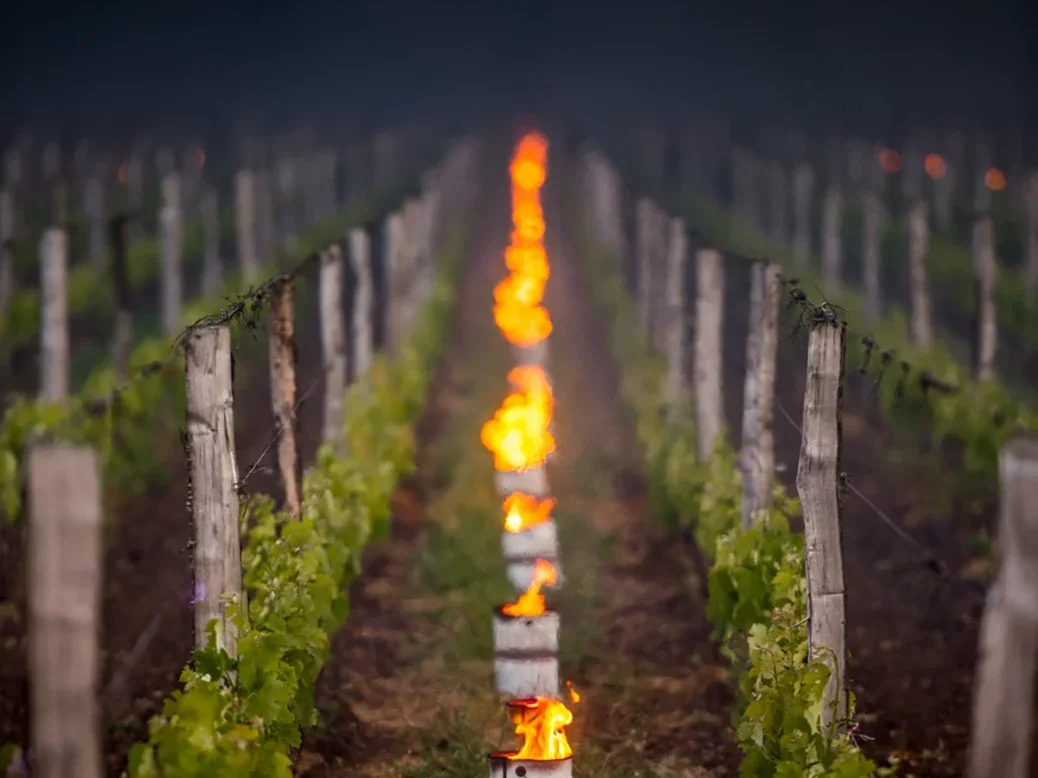
Simon Field MW begins a series of blogs from the Bordeaux 2022 en primeur tastings at a frosty Domaine de Chevalier.
While it would be an exaggeration to maintain that the joys of anticipation outweigh those of an actual encounter, it cannot be denied that the speculation over the quality of the 2022 vintage in Bordeaux is a source of great excitement—all the more so after the somewhat lackluster performance in 2021. Luster aplenty in 2022, it would seem, but we will have to wait a little longer to find out just how much. The Union des Grands Crus primeur campaign is scheduled to start the week commencing April 24, and the châteaux have been, up to now at least, far stricter in enforcing an embargo on journalistic tasting notes and the like—all, quite understandably, in the name of stoking the flames of excitement. There is no reticence, however, when it comes to letting it slip that this is to be a quite exceptional vintage. The next few weeks will explain how and why, and will, all being well, confirm and hopefully even intensify the approbation.
I am here early, in any event, to cover a rather special day at Domaine de Chevalier, which involves lining up and, where necessary, decanting and rebottling the fruits of Olivier Bernard’s first 40 vintages into 40 double magnums, all to be sold as one lot at Christie’s in the autumn. My report thereon will be covered in the fall edition of The World of Fine Wine, thereby coinciding with the auction itself. At the end of the exercise, Olivier’s son, Adrien, allowed me to taste the red and white 22 from barrel. In line with the stipulation rehearsed above, I shall not (yet) offer my detailed tasting notes; merely incline my thumbs in a distinctly upward trajectory in a manner that does not presume to countenance disappointment.
Something special in store then. Jean-Luc Thunevin at Valandraud broadens the conversation; there is little doubt as to the quality of the vintage, in his view. Outstanding on every level, he maintains. There is, however, a certain “fébrilité” (feverishness) in the air about the marketplace in general. He fears that the tensions evidenced on the global geopolitical stage might even jeopardize the success of the primeur campaign—all the more so given the dual economic evils of inflation and raised interest rates, riding on the back of an unprecedented energy supply crisis, not to mention a full-scale war in Europe. Early days to speculate the pricing regime, he concedes, but it will be fascinating to see how the châteaux decide to play it. He is only anxious, he jokes, because he has hardly slept the night before, for fear of a frosty incursion.
Ah, yes… frost. Exactly a year previously, the night-time temperatures at the end of the first week of April 2022 had fallen to between 25ºF and 19ºF (-4ºC and -7ºC), the ensuing frosty snap serving significantly to compromise yields, if not, in this instance (compare with the disaster of 2017) the ultimate quality of the wines themselves. Concentration rather than wanton destruction in 2022, it would seem. Nature’s whim can be hard to call, and the line between triumph and failure is perilously thin. As I drive toward Domaine de Chevalier, the atmosphere takes on a miasmic apocalyptic gloom, something out of Bruegel or even Bosch. Counter to the advice of the AOC, many still burn bundles of hay at the side of the vines, choking up the air in an effort to push up the mercury dial. More respected properties will light evenly spaced candles (apocalypse reversed into near-transcendent luminosity) in the vineyards, or, more prosaically, will punctuate the vines with large air-turbines (éoliennes in French) in order to ensure that the cool air is whisked away from the danger area. We are still some days away from the three days of the Saints de Glace (May 11–13), after which the frost risk is banished by Saint Boniface: “Le bon Saint Boniface entre en brisant la glace…”
The frosty text illustrates just how fragile things are early in the season, in 2023 as in 2022, especially with the rising temperatures and advanced budbreak. Measures such as delaying the pruning, or increasing the spread of cover clops, or modifying the plowing regime, all help up to a point but will not stand in the way of what is to come. If that makes me sound like Jacques le Fataliste, so be it, but I am always struck by the humility of the Bordelais (apparently the most worldly of all) when confronted with the power of nature. Neither, of course, do they spare us their unbridled enthusiasm at something that stands out from the norm, the 2022 vintage in this instance—things just got better and better after this rather shaky start. As we shall soon see.






